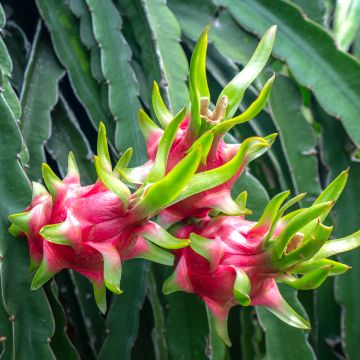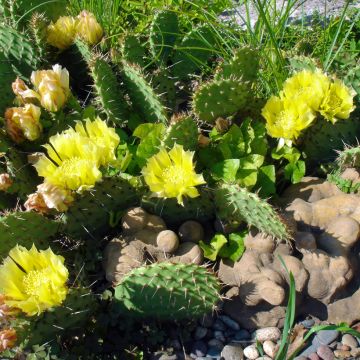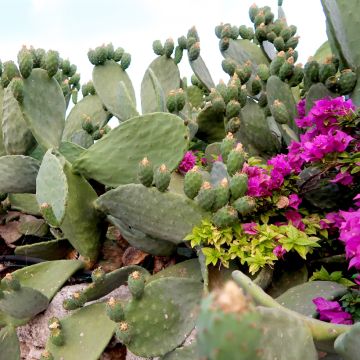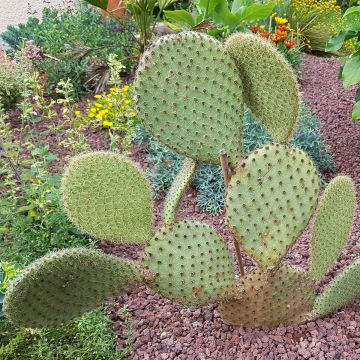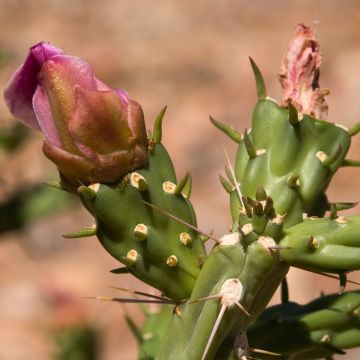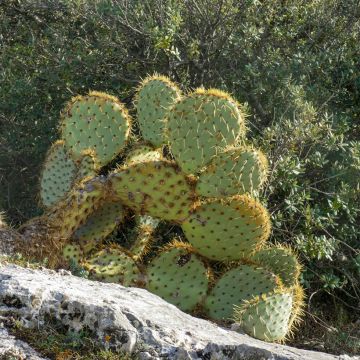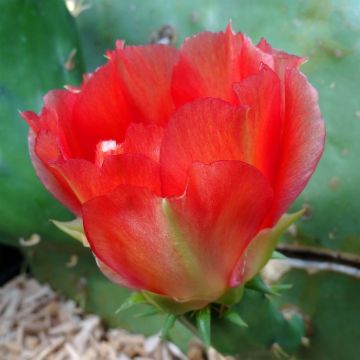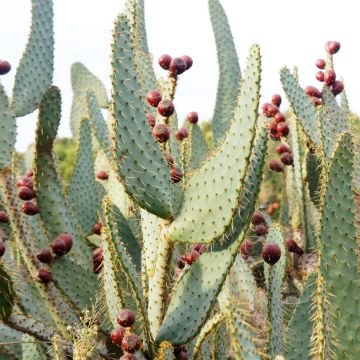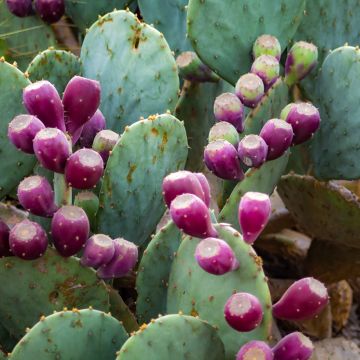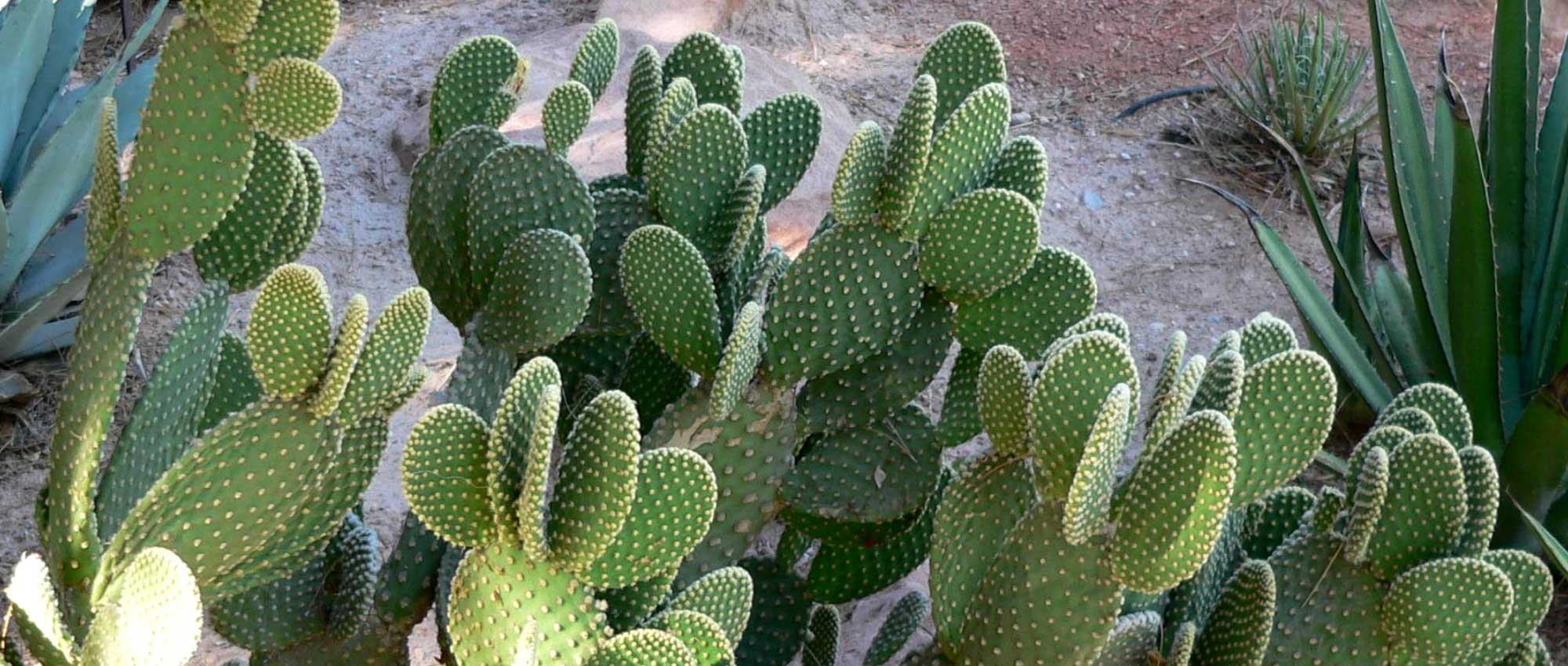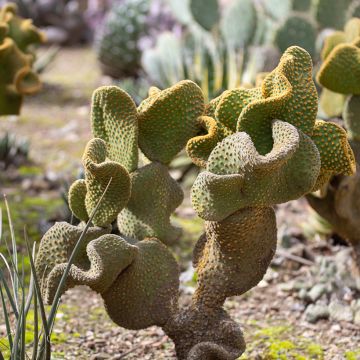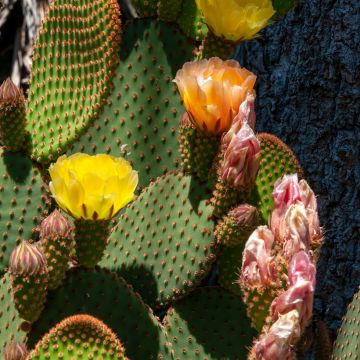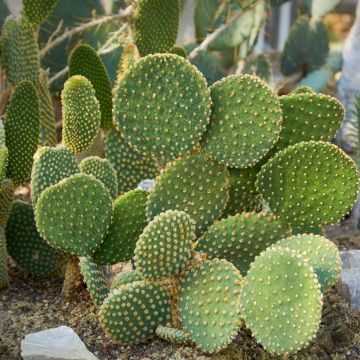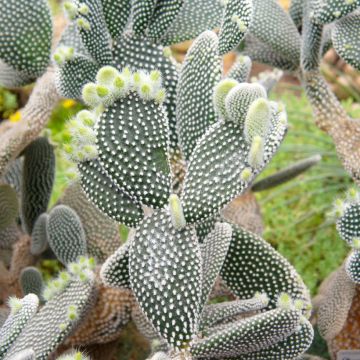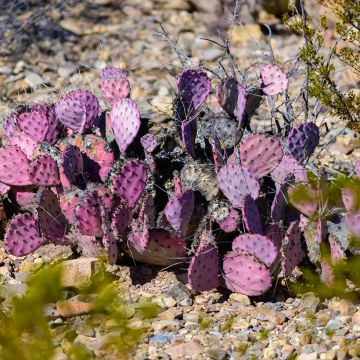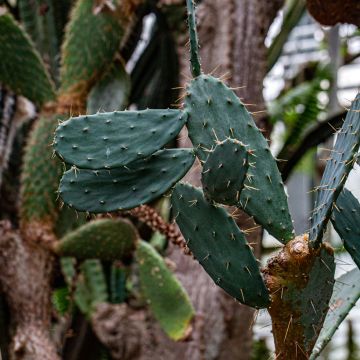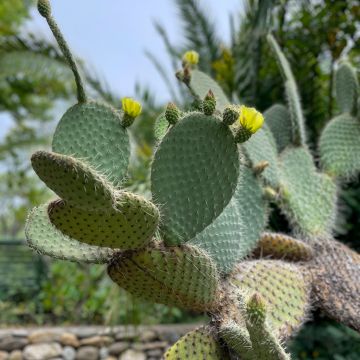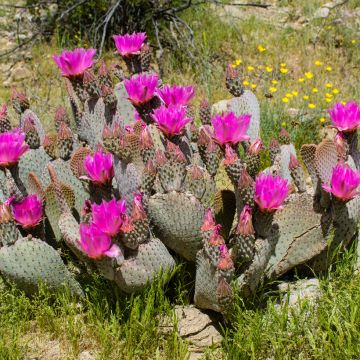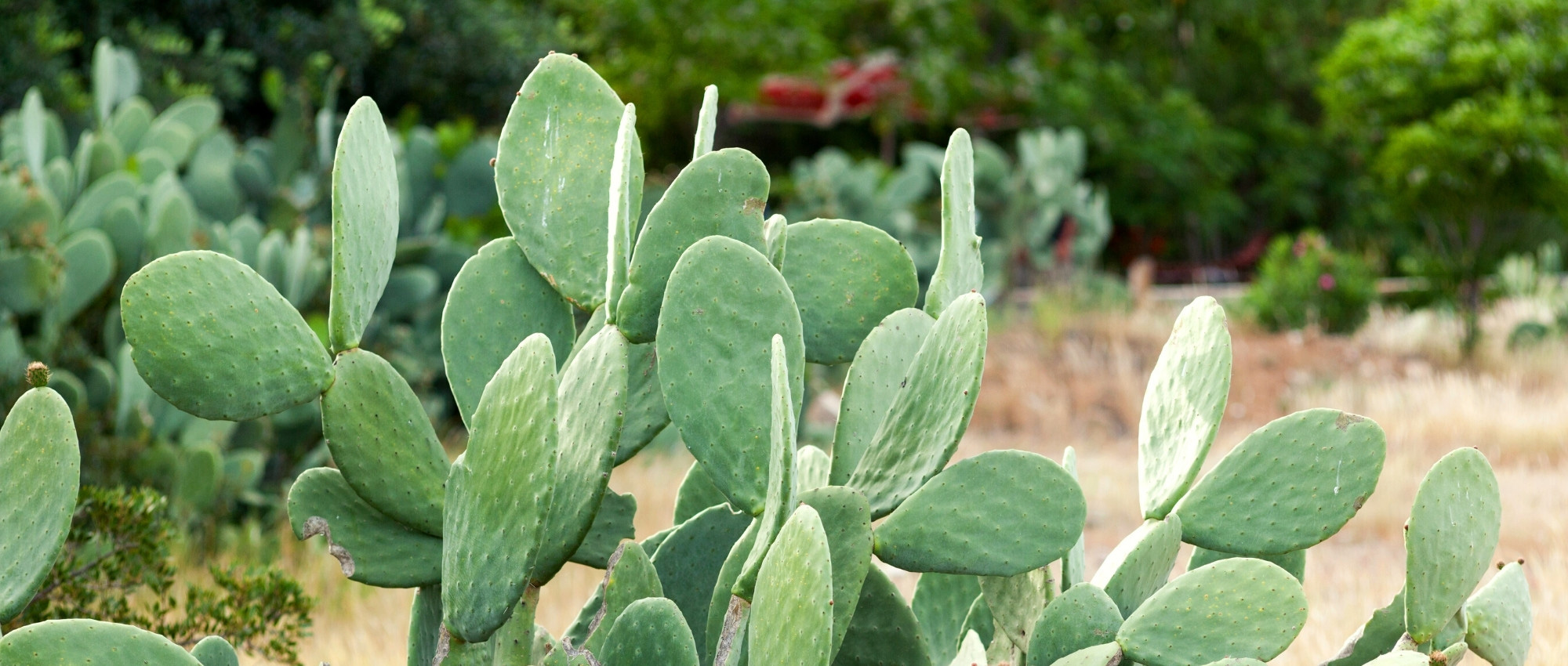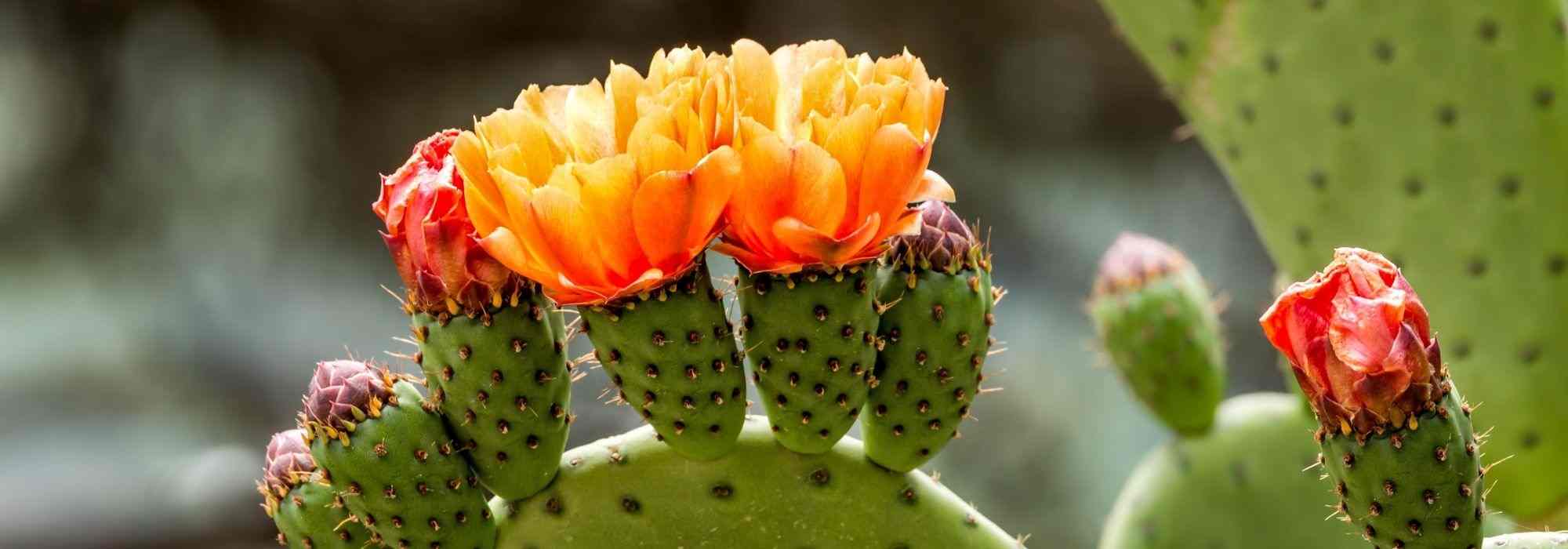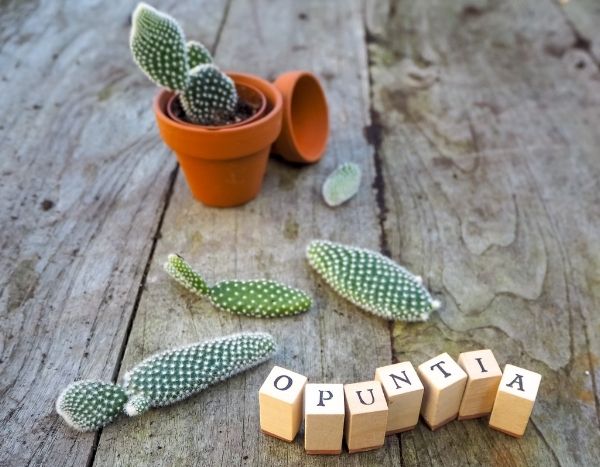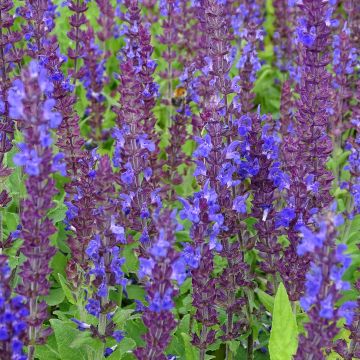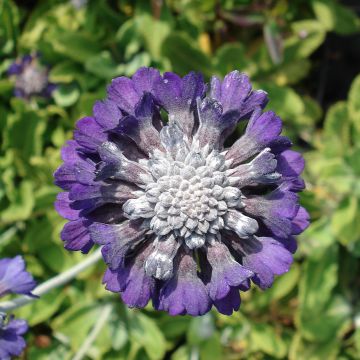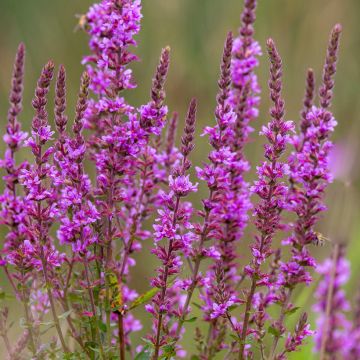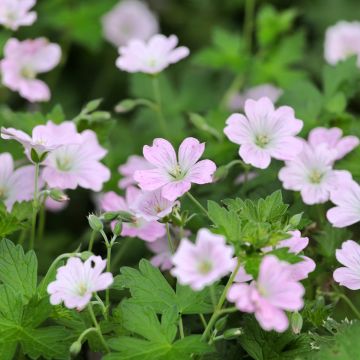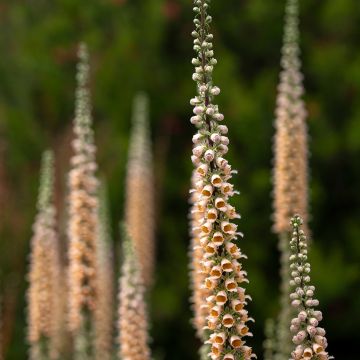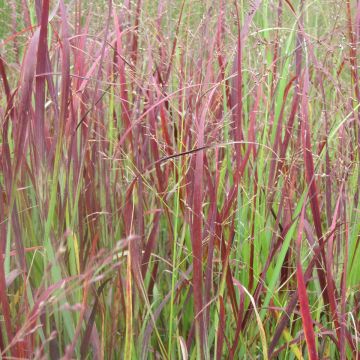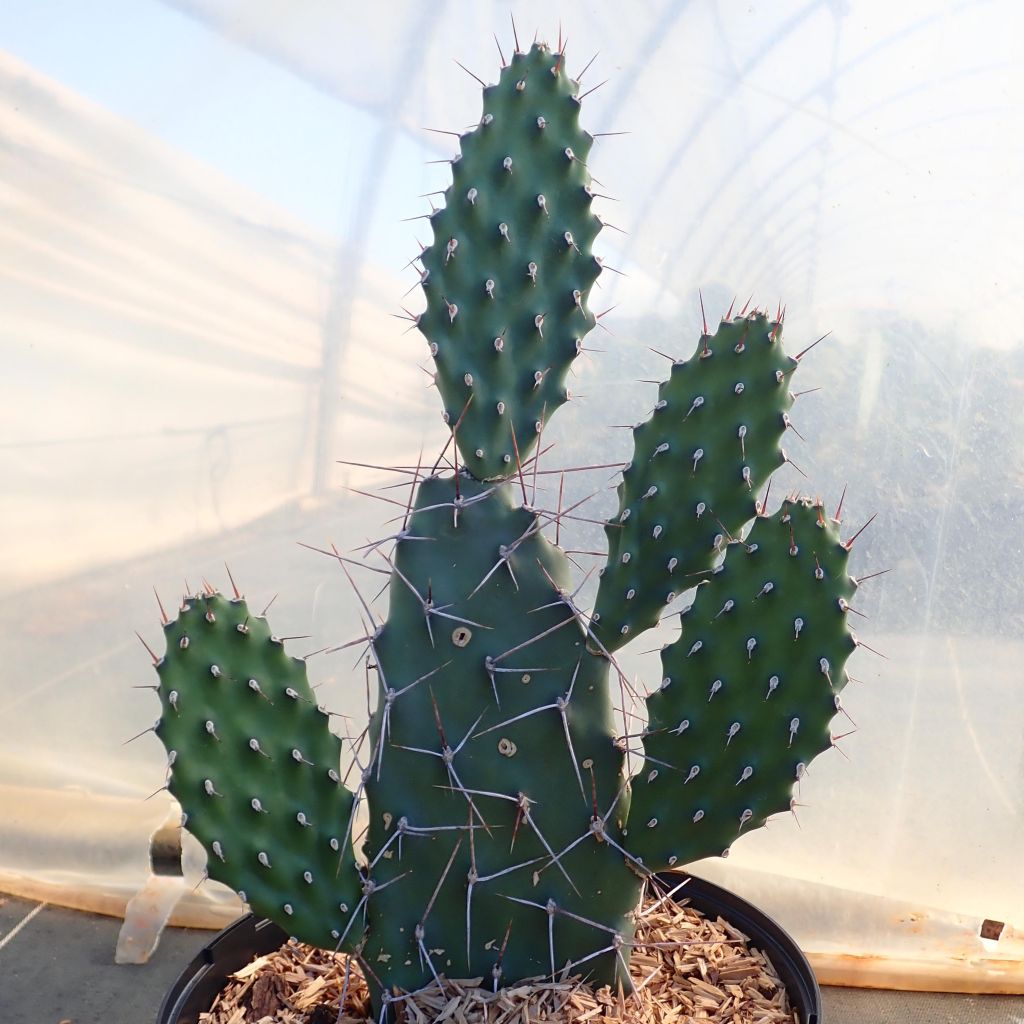

Opuntia sulfurea White - Prickly Pear
Opuntia sulfurea White - Prickly Pear
Opuntia sulfurea Blanc
Opuntia, Prickly Pear
Special offer!
Receive a €20 voucher for any order over €90 (excluding delivery costs, credit notes, and plastic-free options)!
1- Add your favorite plants to your cart.
2- Once you have reached €90, confirm your order (you can even choose the delivery date!).
3- As soon as your order is shipped, you will receive an email containing your voucher code, valid for 3 months (90 days).
Your voucher is unique and can only be used once, for any order with a minimum value of €20, excluding delivery costs.
Can be combined with other current offers, non-divisible and non-refundable.
Why not try an alternative variety in stock?
View all →This plant carries a 12 months recovery warranty
More information
We guarantee the quality of our plants for a full growing cycle, and will replace at our expense any plant that fails to recover under normal climatic and planting conditions.
Would this plant suit my garden?
Set up your Plantfit profile →
Description
The 'Opuntia sulfurea 'blanc' is a beautiful form with white translucent flowers of the Opuntia sulphurea. It is a very rare cactus in cultivation that will delight collectors. Apart from flowering, this prickly pear is characterized by the unusual appearance of its pads, elongated oval in shape, very thick, they have an embossed pattern from which long red-ringed prickles and crenulated margins emerge. The plant is more or less sprawling, well-branched, of medium vigor, and easy to grow in full sun in any well-drained, poor, rocky, and arid soil, in the ground in our regions that are not too cold and not too humid in winter. It will also make a big impression in a pot on the terrace, placed far from foot traffic!
The Opuntia sulphurea, a close relative of the Prickly Pear (Opuntia ficus indica), is a succulent plant devoid of true leaves from the cactus family. This botanical species is native to the dry areas of northern Argentina. It forms a bush that is wider than it is tall, an adult plant will reach about 40-50 cm (16-20in) in height and can spread laterally up to an average of 1.50 m (5ft). Its dimensions will of course be reduced in a pot. Its growth is moderately fast, with the plant producing 1 or 2 generations of new pads per year from spring to autumn. The vegetation is composed of pads or cladodes that are stacked on top of each other. Measuring up to 10-15 cm (4-6in) wide and 30 cm (12in) long, with a thickness of 3 to 7 cm (1 to 3in), they are obovate to oblong in shape and fleshy. The base of the plant lignifies with age, forming a very short trunk. The green surface of the pads is covered with white-gray areoles adorned with tiny transparent but formidable spines called glochids, from which clusters of white prickles emerge, measuring up to 10 cm (4in) long, irregularly ringed with reddish-brown. On the young pads, succulent and curled atrophied leaves appear, which quickly disappear in favor of the glochids and prickles. Flowering occurs from late May to late July, earlier or later depending on the climate. Several flowers appear around the edges of the pads, mainly towards their tips. The cup-shaped flowers, 4 cm (2in) wide, are composed of shiny white petals with a fine and slightly translucent texture. In favorable climates, they give way to small pear-shaped fruits that turn reddish when ripe.
This surprising Prickly Pear is hardy down to -10°C without protection, but in perfectly drained, rocky, or sandy soil. It must be planted in a rock garden or on a dry slope, mainly in hot and dry regions in summer. It naturally structures exotic or contemporary landscapes, associated with hardy agaves, Nolinas, and arborescent Euphorbias. In cold and humid climates, it can be easily grown in a pot, allowing it to be sheltered in winter in a cold greenhouse or an unheated conservatory, kept almost dry.
Opuntia sulfurea White - Prickly Pear in pictures


Flowering
Foliage
Plant habit
Botanical data
Opuntia
sulfurea
Blanc
Cactaceae
Opuntia, Prickly Pear
North America
Other Opuntia
View all →Planting and care
Plant Opuntia sulfurea in spring or early autumn, in full sun, in preferably poor, rocky, stony, sandy, even limestone, very well-drained soil. It tolerates some winter humidity in porous soil, and appreciates dry, even arid soils in summer. It will withstand frost down to around -10°C (14°F), or even more in very dry soil. It is not known to be susceptible to pests, except for cochineal insects.
Cultivation substrate: 3/4 compost + 1/4 garden soil + organic fertilizer for potted plants. Sandy, very rocky soil, for open ground cultivation.
Propagating prickly pear's is easy: take a segment at a joint, place it on a cactus-type substrate for a few days, until a callus forms. Then bury the base of the cutting a little deeper into the soil and water regularly. The plant will not flower or bear fruit before the age of 3.
Handle your cacti with thick gloves and protective goggles.
Planting period
Intended location
Care
Planting & care advice
This item has not been reviewed yet - be the first to leave a review about it.
Similar products
Haven't found what you were looking for?
Hardiness is the lowest winter temperature a plant can endure without suffering serious damage or even dying. However, hardiness is affected by location (a sheltered area, such as a patio), protection (winter cover) and soil type (hardiness is improved by well-drained soil).

Photo Sharing Terms & Conditions
In order to encourage gardeners to interact and share their experiences, Promesse de fleurs offers various media enabling content to be uploaded onto its Site - in particular via the ‘Photo sharing’ module.
The User agrees to refrain from:
- Posting any content that is illegal, prejudicial, insulting, racist, inciteful to hatred, revisionist, contrary to public decency, that infringes on privacy or on the privacy rights of third parties, in particular the publicity rights of persons and goods, intellectual property rights, or the right to privacy.
- Submitting content on behalf of a third party;
- Impersonate the identity of a third party and/or publish any personal information about a third party;
In general, the User undertakes to refrain from any unethical behaviour.
All Content (in particular text, comments, files, images, photos, videos, creative works, etc.), which may be subject to property or intellectual property rights, image or other private rights, shall remain the property of the User, subject to the limited rights granted by the terms of the licence granted by Promesse de fleurs as stated below. Users are at liberty to publish or not to publish such Content on the Site, notably via the ‘Photo Sharing’ facility, and accept that this Content shall be made public and freely accessible, notably on the Internet.
Users further acknowledge, undertake to have ,and guarantee that they hold all necessary rights and permissions to publish such material on the Site, in particular with regard to the legislation in force pertaining to any privacy, property, intellectual property, image, or contractual rights, or rights of any other nature. By publishing such Content on the Site, Users acknowledge accepting full liability as publishers of the Content within the meaning of the law, and grant Promesse de fleurs, free of charge, an inclusive, worldwide licence for the said Content for the entire duration of its publication, including all reproduction, representation, up/downloading, displaying, performing, transmission, and storage rights.
Users also grant permission for their name to be linked to the Content and accept that this link may not always be made available.
By engaging in posting material, Users consent to their Content becoming automatically accessible on the Internet, in particular on other sites and/or blogs and/or web pages of the Promesse de fleurs site, including in particular social pages and the Promesse de fleurs catalogue.
Users may secure the removal of entrusted content free of charge by issuing a simple request via our contact form.
The flowering period indicated on our website applies to countries and regions located in USDA zone 8 (France, the United Kingdom, Ireland, the Netherlands, etc.)
It will vary according to where you live:
- In zones 9 to 10 (Italy, Spain, Greece, etc.), flowering will occur about 2 to 4 weeks earlier.
- In zones 6 to 7 (Germany, Poland, Slovenia, and lower mountainous regions), flowering will be delayed by 2 to 3 weeks.
- In zone 5 (Central Europe, Scandinavia), blooming will be delayed by 3 to 5 weeks.
In temperate climates, pruning of spring-flowering shrubs (forsythia, spireas, etc.) should be done just after flowering.
Pruning of summer-flowering shrubs (Indian Lilac, Perovskia, etc.) can be done in winter or spring.
In cold regions as well as with frost-sensitive plants, avoid pruning too early when severe frosts may still occur.
The planting period indicated on our website applies to countries and regions located in USDA zone 8 (France, United Kingdom, Ireland, Netherlands).
It will vary according to where you live:
- In Mediterranean zones (Marseille, Madrid, Milan, etc.), autumn and winter are the best planting periods.
- In continental zones (Strasbourg, Munich, Vienna, etc.), delay planting by 2 to 3 weeks in spring and bring it forward by 2 to 4 weeks in autumn.
- In mountainous regions (the Alps, Pyrenees, Carpathians, etc.), it is best to plant in late spring (May-June) or late summer (August-September).
The harvesting period indicated on our website applies to countries and regions in USDA zone 8 (France, England, Ireland, the Netherlands).
In colder areas (Scandinavia, Poland, Austria...) fruit and vegetable harvests are likely to be delayed by 3-4 weeks.
In warmer areas (Italy, Spain, Greece, etc.), harvesting will probably take place earlier, depending on weather conditions.
The sowing periods indicated on our website apply to countries and regions within USDA Zone 8 (France, UK, Ireland, Netherlands).
In colder areas (Scandinavia, Poland, Austria...), delay any outdoor sowing by 3-4 weeks, or sow under glass.
In warmer climes (Italy, Spain, Greece, etc.), bring outdoor sowing forward by a few weeks.






























